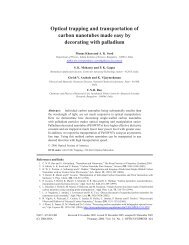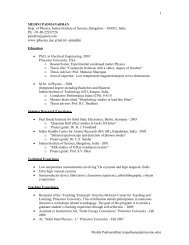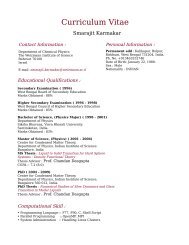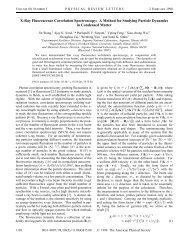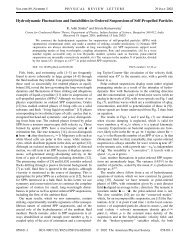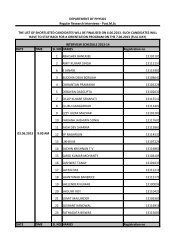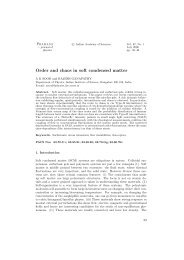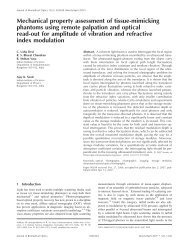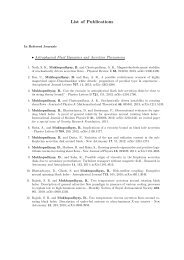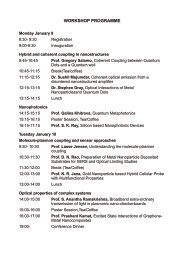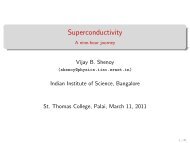Thermoelectric Properties of Fe0.2Co3.8Sb12-xTex ... - Physics
Thermoelectric Properties of Fe0.2Co3.8Sb12-xTex ... - Physics
Thermoelectric Properties of Fe0.2Co3.8Sb12-xTex ... - Physics
You also want an ePaper? Increase the reach of your titles
YUMPU automatically turns print PDFs into web optimized ePapers that Google loves.
A Unique Electrical switching behavior in Cu-As-Se glasses<br />
K. Ramesh<br />
Department <strong>of</strong> <strong>Physics</strong>, Indian Institute <strong>of</strong> Science, Bangalore 560012, India.<br />
ABSTRACT<br />
A unique electrical switching behaviour has been observed in Cu x As 40 Se 60-x glasses over<br />
a wide range <strong>of</strong> composition (0 ≤ x ≤ 32). The glasses with lower Cu concentrations (x < 15) do<br />
not exhibit switching, whereas glasses in the range 15 ≤ x ≤ 25 show a threshold type switching.<br />
The glasses in the range 25 ≤ x ≤ 28 exhibited an unusual switching from low resistance to high<br />
resistance state. For x ≥ 30, the glasses are found to show a memory switching. This is a unique<br />
observation and for the first time a system showing no switching → threshold switching → low<br />
resistance to high resistance switching<br />
→<br />
memory switching has been observed.<br />
The thermal crystallization <strong>of</strong> Cu x As 40 Se 60-x glasses at their respective crystallization<br />
temperatures indicate that the structural network is mainly characterized by Cu 3 AsSe 4 and<br />
As 2 Se 3 for x < 15 and by Cu 3 AsSe 4 and Cu 2 As 3 for x ≥ 25. The composition range 15 ≤ x ≤ 20 is<br />
characterized only by Cu 3 AsSe 4 structural units. The samples cooled from their melt show only<br />
the ternary Cu 3 AsSe 4 for x ≤ 20. For x > 20, precipitates <strong>of</strong> ‘As’ has also been observed along<br />
with Cu 3 AsSe 4 and Cu 2 As 3 phases.<br />
Normally, the memory switching is explained with the thermal model and threshold<br />
switching is explained with the electronic model. The present studies provide a unique way to<br />
understand the electrical switching exhibited by chalcogenide glasses based on the thermal mode<br />
and filament formation. The proposal <strong>of</strong> the influence <strong>of</strong> cross-linking and rigidity <strong>of</strong> the<br />
structural network in changing the switching type from memory to threshold and vice versa is<br />
also ruled out by the present studies.



